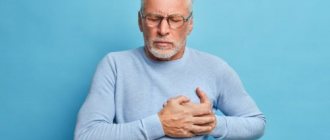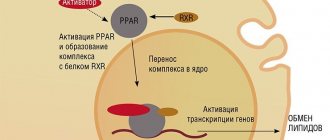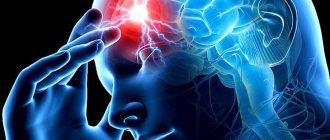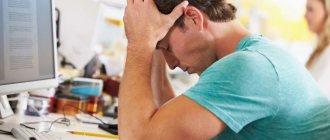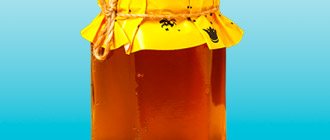Normal blood circulation is important for the heart, all organs and systems without exception. The “components” of the body cannot work properly without the supply of useful substances through the blood and without the timely removal of excess substances - products of metabolic processes, carbon dioxide. Congestion can lead to persistent dysfunction.
The cause of impaired blood circulation is a change in the tone of blood vessels. Their narrowing can occur due to smoking, a sedentary lifestyle, excess weight, diseases of the thyroid and pancreas, kidneys, heart, the development of atherosclerosis, and thrombosis. Insufficient blood circulation in the legs is associated with sedentary work or standing for long periods of time.
General Tips
All the methods described below are best used in combination, since individually they will not give a pronounced effect:
- Control your weight . With excess body weight, the load on the legs increases, the blood vessels deteriorate and blood circulation is impaired. If possible, try to get rid of extra pounds.
- Visit your doctor . Poor circulation is only a consequence of more serious diseases. A comprehensive examination will help identify varicose veins, diabetes, heart problems, osteochondrosis, abnormalities in the composition of the blood or disorders of the autonomic nervous system. Start treatment by eliminating diseases.
- Buy special tights with a massage effect at the pharmacy . They will help reduce the load on your legs and help restore blood circulation.
- After consulting with your doctor first, start taking preventive medications such as Venza, Ascorutin, Escusan, and so on.
- Every evening after taking a bath or shower, perform a light, rubbing foot massage using ointments with medicinal ingredients.
- Improve the general condition of the body . Be sure to take a complete vitamin complex every quarter.
- Avoid uncomfortable shoes . If it is tight, narrow or in high heels, then blood stagnation occurs in the legs and its circulation is impaired. Give preference to soft shoes made of natural, breathable materials with small wedges.
- Don't wear tight clothes . Jeans or trousers that are too tight compress the blood vessels, making normal circulation impossible.
- Use a contrast shower daily . This will relieve tension and improve blood circulation.
- Learn to sit correctly . Do not cross your legs; change the position of your legs from time to time. Sitting and standing for too long also leads to poor circulation, so alternate between them.
- Visit a good reflexologist . Massaging certain points on the feet improves blood flow, relieves fatigue and has a beneficial effect on improving immunity.
Diagnosis of thrombosis or embolism
In addition to the clinical picture, it is necessary to use special research methods for diagnosis.
Ultrasound diagnostics makes it possible to clarify the nature of occlusion and identify atherosclerotic plaques during thrombosis. Thrombosis differs from embolism in the initial damage to the arteries; in embolism, the arteries are most often not affected.
Angiography is performed on the operating table to clarify the receiving vascular bed and allows you to determine the nature of the surgical intervention
Multislice computed tomography is performed when there is time for a detailed diagnosis and allows you to very accurately identify the nature of the lesions and determine treatment tactics.
Proper nutrition
If your blood circulation is poor, your legs may swell and get tired quickly. To prevent this from happening, it is recommended to follow a diet that will help improve and maintain vascular health.
Some foods prevent the deposition of cholesterol, slightly thin the blood, accelerate its circulation, and strengthen the walls of blood vessels:
- The amount of fatty foods should be limited to a minimum; it negatively affects the condition of blood vessels and the quality of blood circulation.
- Ginger is very useful. For example, you can try this drink: half a teaspoon of chopped ginger, twice as much honey and a small pinch of black pepper. All ingredients need to be poured with a glass of boiling water. This spicy medicine will stimulate blood flow and boost immunity.
- Add healthy spices to your food - garlic, horseradish, mustard, red and black pepper.
- In summer and autumn, do not miss the opportunity to dine on watermelon. The substance lycopene contained in it actively removes cholesterol from the body and activates blood circulation.
- Avoid consuming fast food, refined foods, carbonated drinks and drinks with high caffeine content.
- Eat more foods high in fiber - raw fruits and vegetables, grains.
- For good blood circulation, vitamin B is simply necessary. It is found in sufficient quantities in bread, especially black and coarsely ground, rolled oats, beans, lentils, nuts, especially pine nuts, fish
- You need to drink at least 8 glasses of regular clean water per day. This will prevent blood from thickening.
Proper balanced nutrition will help improve blood circulation, correct blood properties, and improve immunity. Along with the diet, it is recommended to give up bad habits such as smoking and drinking alcohol.
Why is it important to take care of your feet?
In our body, all systems are interdependent and therefore one problem, if it is not solved, leads to others. Our skin, according to reflexology, directly reflects the state of our internal organs and vice versa.
If blood circulation and nutrition of the legs suffer, uneven loads occur, accompanied by pain, “distress signals” begin to be sent to the brain and other body systems.
Such a situation, if it is permanent, is a great stress and threatens to result in global disruptions. By taking care of our feet and caring for them, we impart a healthy, comfortable state to the entire body.
There is also a feedback: the affected internal organs also transmit information to the skin. And knowing the exit points of these signals, you can not only diagnose, but also treat.
Exercises to improve blood circulation
Since restoring impaired blood circulation in the legs is a long process, you will not see the first results soon. You can achieve a faster effect if you additionally perform a set of simple exercises.
Exercise No. 1.
It is performed while sitting with your arms spread to the side. Lean forward while clasping your left leg with your hands. Straighten up, raising your left knee towards your chest. Return to the original position and repeat the exercise, changing legs.
Doctor's advice
Amlodipine and Pentoxifylline reduce blood pressure and are taken under daily supervision. Actovegin and Solcoseryl improve oxygen supply to tissues and help accelerate wound healing. The main indication for use is trophic ulcers with varicose veins and diabetes mellitus. If blood circulation is impaired due to atherosclerosis of the vessels of the legs, then venotonics are considered the optimal means. In the case of diabetes mellitus, as the cause of decreased blood flow in the legs, the basis of therapy is aimed at correcting glucose levels and taking medications such as Octolipen and Milgamma.
Victoria Druzhikina Neurologist, Therapist
Exercise No. 2.
Performed sitting with hands clasped under the hips. Using your hands, lift your hips with your feet on your toes. Relax, lower your feet to the floor. Repeat several times.
Exercise No. 3.
Performed while sitting. Lean forward, grasping the shin of your left leg. Shift your weight to your right buttock as you lift your bent leg, then straighten it. Repeat with the other leg.
Exercise No. 4.
Performed sitting with knees apart and feet shoulder-width apart. Squeeze your hips and bring your knees together. Return to the previous position and repeat several times.
Exercise No. 5.
Performed while sitting using a gymnastic bandage. Throw the bandage over your feet, straighten your legs, and take the ends of the bandage in your hands. Straighten your feet, trying to stretch the bandage.
Exercise No. 6.
Place a gymnastic bandage on the foot of your left leg, straighten your legs. Pull the bandage, lifting your leg, move it to the side and return to its previous position. Repeat, changing legs.
Exercise No. 7.
It is performed while sitting with your hands on your knees. Using your arms, move both legs to the left side. Return to your previous position and move your legs to the right. Repeat.
When to see a doctor immediately
Symptoms of acute cerebrovascular accident are a reason to call an ambulance:
- asymmetry of the face, tongue;
- numbness, weakness, paralysis of a limb;
- speech disorders;
- double vision, loss of focus;
- vomit;
- severe incoordination of movements (“drunk” gait);
- confusion;
- unusually severe headache.
Medical care is also needed when the symptoms of a chronic circulatory disorder do not go away for a long time, and exercises do not help restore vascular tone. If severe dizziness, headache, drowsiness, difficulty concentrating, or fatigue persist for several days, consult a physician or neurologist.
Some signs of poor circulation in the legs also require medical attention. Spider veins, bulging veins, long-lasting bruises, persistent cramps in the calf muscles are a reason to visit a phlebologist.
Folk remedies
In case of impaired blood circulation in the legs, traditional medicine can provide good help.
All of them are completely safe, accessible and healthy.
Here are some of the most popular proven recipes:
- Place fresh or dried nettles in a bowl, filling 1/3 of the volume. Top up with boiling water. Wait until it cools down to the point where you can put your feet in it. Keep them in the infusion for about 10 minutes. Repeat the procedure after 2 – 3 days.
- Take 300 g of prunes and hazelnuts, half a kilo of raisins and 600 g of walnuts. Pass all this through a meat grinder, add two tablespoons of honey and mix. You need to take the medicine daily, a tablespoon half an hour before each meal (3 times).
- An excellent remedy for poor blood circulation is an infusion of horse chestnut flowers. For a half-liter bottle of vodka, take 50 g of dried flowers and leave in a warm place for two weeks in a dark place. Be sure to shake every day. Take the infusion 30 drops, diluted in a quarter glass of warm water, three times a day before meals (half an hour). Treatment is carried out in courses of 10 days followed by a 5-day break.
- Steaming your feet in a bath with the addition of spruce needles and salt gives a quick effect. You need to add two tablespoons of raw materials per liter of water. And baths with linden blossom will relieve swelling.
The listed methods will help prevent circulatory disorders and improve it. But be sure to see a doctor, as self-medication can lead to undesirable consequences.
How to improve blood circulation in joints. General information about coxarthrosis of the hip joint
Coxarthrosis, known as deforming arthrosis of the hip joint, is a disease in which destruction of cartilage tissue and deformation of bones occurs. As a result of the formation of bone growths in the joint, pain and stiffness appear.
Types of coxarthrosis
Medicine classifies the disease into types:
- post-traumatic (after a fracture or injury to the head, neck of the femur);
- idiopathic (if the cause of the pathology is unknown);
- joint abnormality (congenital);
- involutive (age);
- secondary (develops due to previous diseases).
In cases of simultaneous damage to both hip joints, the patient is diagnosed with bilateral coxarthrosis.
Causes and symptoms
Clinical practice shows that in Russia 40-year-old women and 50-year-old men are at risk for this disease.
Early manifestations of the disease often have no obvious symptoms. Therefore, its initial form may not be noticed. The first symptoms usually make themselves felt by pain in the leg (in the evening), the back and knees may also hurt. In this case, a disorienting factor is the absence of pain during movement, which delays the time to see a doctor. The time when it is possible to treat pathology with simple methods will be missed.
The reasons for the development of coxarthrosis can be considered to be a large load on the joints in people with a very active lifestyle and those who move little. Young people often bruise or injure their joints, so they have a high risk of developing coxarthrosis.
Symptoms of cartilage damage in the hip joints are also found against the background of arthritis, osteoporosis, and diabetes. It can also be argued that coxarthrosis is accompanied by lumbar osteochondrosis. It happens that the symptoms of lower back diseases can be mistaken for coxarthrosis.
Modern medicine confirms that stress has the greatest destructive effect on joints. It is stress hormones that cause a deterioration in the blood supply to cartilage and bone tissue, which leads to insufficient lubrication and changes in structure.
The result of these changes is pain in the groin, thigh, and stiffness of the hip joint. Also, when walking, you can hear a crunching sound in the joint, and over time, lameness appears due to atrophy of the thigh muscles.
Foot map
In reflexology, a so-called foot map is used. It shows all the significant points and indicates which bodies they are responsible for communicating with. There are 36 such zones on the sole of each foot. The foot is a projection of the human body, where the toes are the head, and the heel is the pelvic area and knees.
So, on top there are points responsible for the brain, pituitary gland, vision and hearing. The wide part of the foot is connected to the heart, lungs, and liver. The lower section allows you to influence the reflex zones of the kidneys, intestines, and genitals. The outer part of the foot is also rich in active points. For example, the inner lateral surface is a projection of the spine.
During the procedure, the following techniques are used
- stroking with the palm or knuckles; - rubbing with straight and circular movements; - tong-like kneading; — pressure (on active points); - effleurage; - vibration (lifting and shaking of each toe or the entire foot.
The sequence of actions differs in different methods. In this case, as a rule, the procedure begins with working on each finger. Then massage the sole, where the concentration of active points is especially high.
Next comes the impact on the outside: the top and sides. Finally, attention is paid to the heel, Achilles tendon, and ankle joint.
The procedure ends with light stroking. The massage therapist's hand soothes and relaxes the tissues.
Why not all types of massage can be done for varicose veins
Some types of massage involve intense physical impact on the affected areas. In the case of varicose veins, this can harm the already weakened walls of blood vessels. Certain techniques can provoke rupture of veins, internal bleeding, and the formation of hematomas.
The main contraindications to massage of leg veins with varicose veins are:
- progressive disease at stage 3 or subsequent;
- varicose veins of deep veins;
- the presence of trophic ulcers, phlebitis, thrombophlebitis;
- decompensation of pathology.
Before choosing a massage technique, it is necessary to conduct a blood clotting test. If this indicator is elevated, any massage technique is contraindicated for the patient.
